Hectic, crowded and loud but clean, friendly and picturesque. Mumbai is the biggest city in India with a population of over 21 million. You are constantly surrounded by people, traffic and noise, but It’s worth it to see the lovely historical buildings.
This vibrant city was an important trading post for the Portuguese and then the British. The original fort is no longer standing, but the colonial architecture left behind on the former fort grounds is spectacular. We spent a few days wandering the busy streets, admiring these gorgeous buildings, fountains and parks. One of our favourite ones is Chhatrapati Shivaji Terminus Train Station. This extravagant Gothic building has an interesting mix of domes, spires, turrets and gargoyles. The inside was equally impressive with tall, arched passageways and vaulted ceilings. This massive building has a commanding presence on the corner and is opposite to the stately Municipal Corporate building (BMC). BMC is a large Gothic stone building with tall towers and domed ceilings. It wasn’t even listed in the guide books, but we thought it was impressive.

Chhatrapati Shivaji Terminus train station, Mumbai 
Chhatrapati Shivaji Terminus train station, Mumbai 
Chhatrapati Shivaji Terminus train station, Mumbai 
Chhatrapati Shivaji Terminus train station, Mumbai 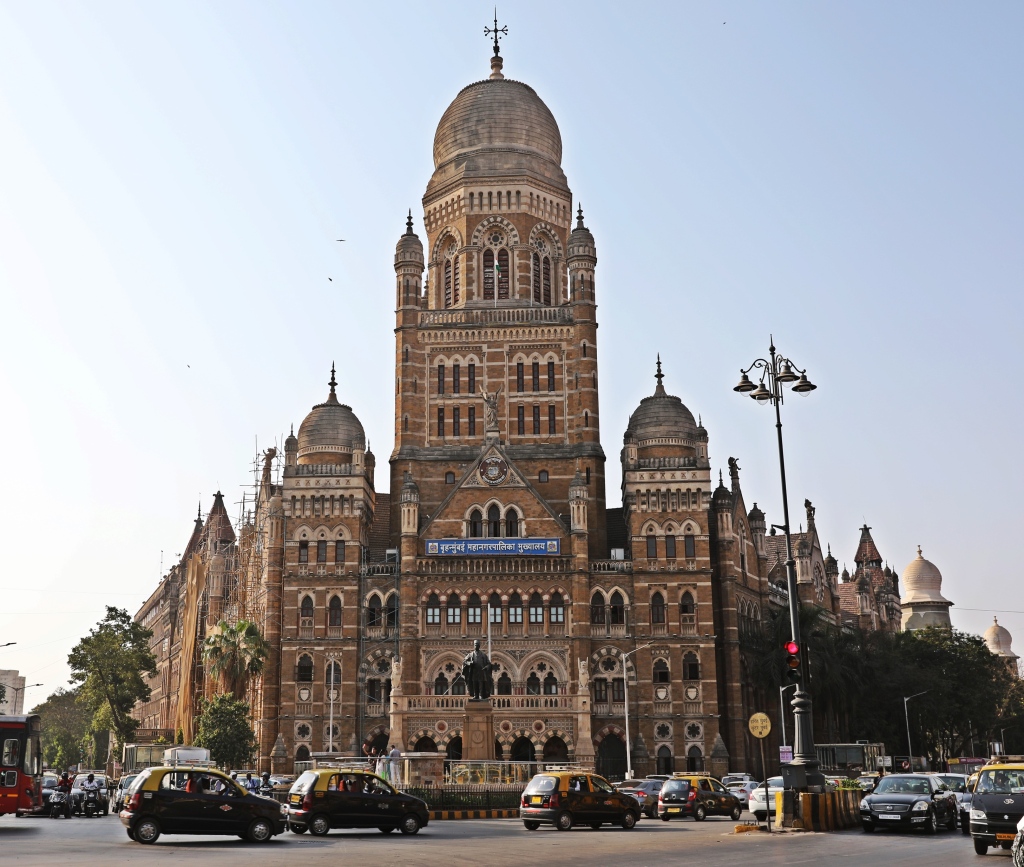
BMC Building, Mumbai
Chhatrapati Shivaji Maharaj Vastu Snagrathalaya is an Indo-Saracenic wonder. Surrounded by a beautifully manicured garden, the long building has many minarets and a large onion-dome on the roof. It now houses a large museum. Nearby, the High Court building is a large, multi-towered stone building. Unfortunately it is surrounded by trees so it’s mostly hidden from view. Beside it is the tall, stately Rajabai clock tower. There are many other colonial buildings in the neighbourhood that are in very good condition. Most are used today as government and university buildings so we weren’t allowed inside, but we could still admire their exteriors.

Chhatrapati Shivaj Maharaj Vastu Snagrathalaya. Mumbai 
High Court. Mumbai 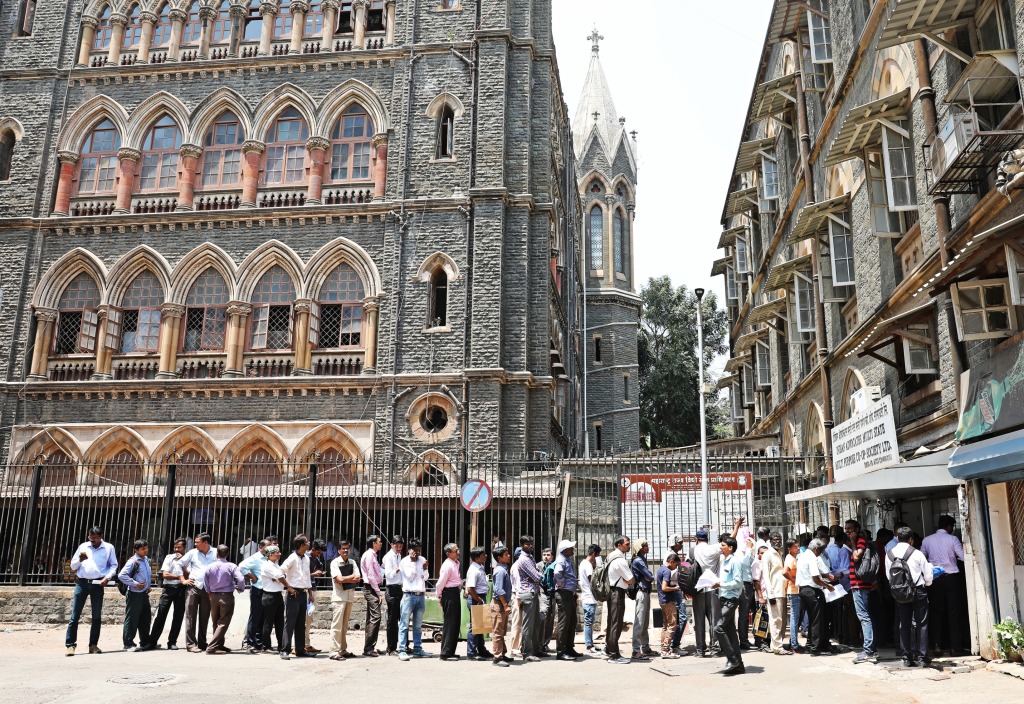
Line up at the High Court gates. Mumbai 
High Court and Rajabai clock tower. Mumbai 
Rajabai clock tower. Mumbai 
Cricket game in Oval Maidan Park, Mumbai 
Flora Fountain. Mumbai 
David Sassoon Library. Mumbai 
Colonial buildings. Mumbai 
Colonial building, Mumbai 
Streets of Mumbai
Mumbai is situated on the western coast of India on the Arabian Sea. It has a lovely pedestrian walkway along the waterfront, allowing great views of the large city’s skyline. We went to Marine Drive at sunset and then stayed to see the city lights at night. It’s a popular place for Mumbai locals and tourists to hang out in the cooler evenings.
This fast-paced modern city still had a small-town India flavour. There were many street cows, delivery-bicycles and street-side cobblers to add to our street-photography compilation.

Sunset behind Mumbai skyline from Marine Drive 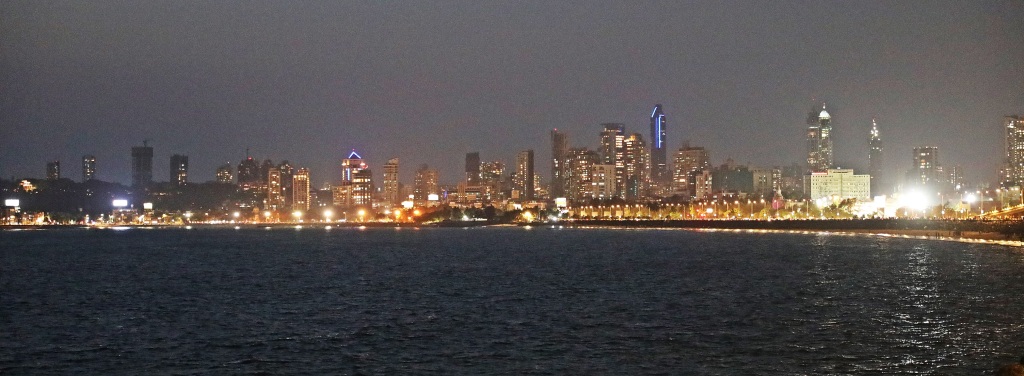
Mumbai skyline at night from Marine Drive 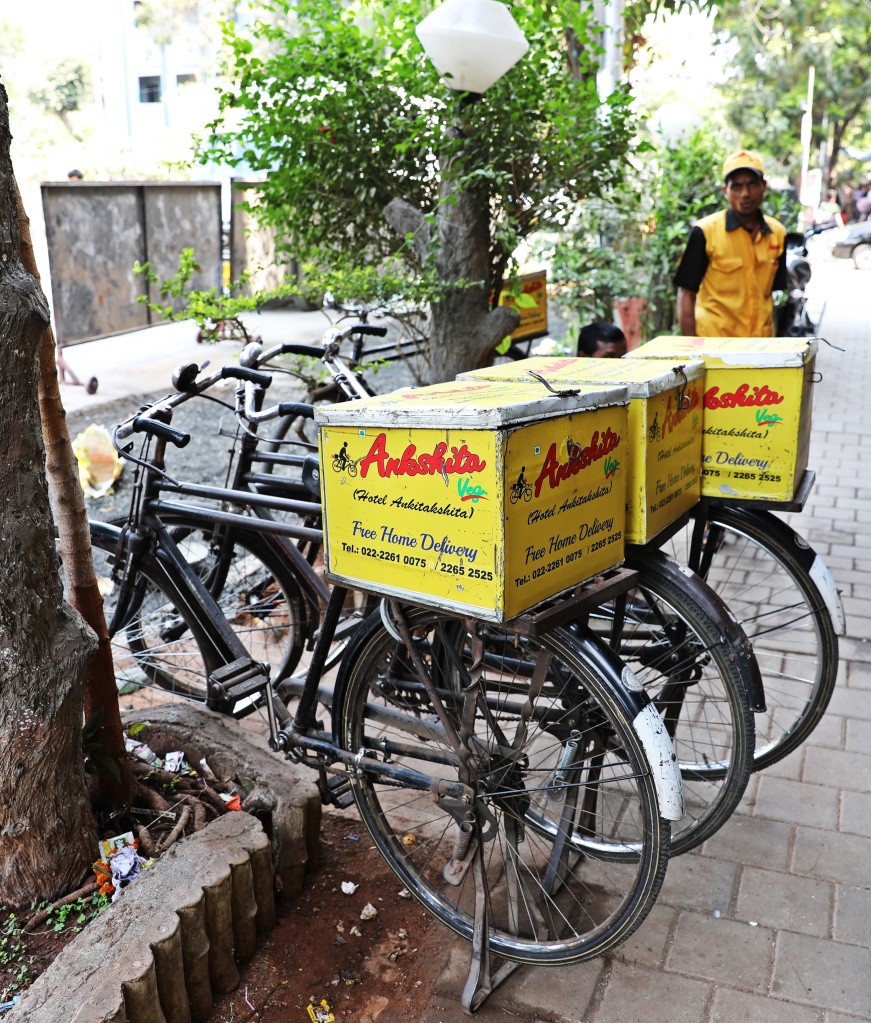
Curry delivery, Mumbai 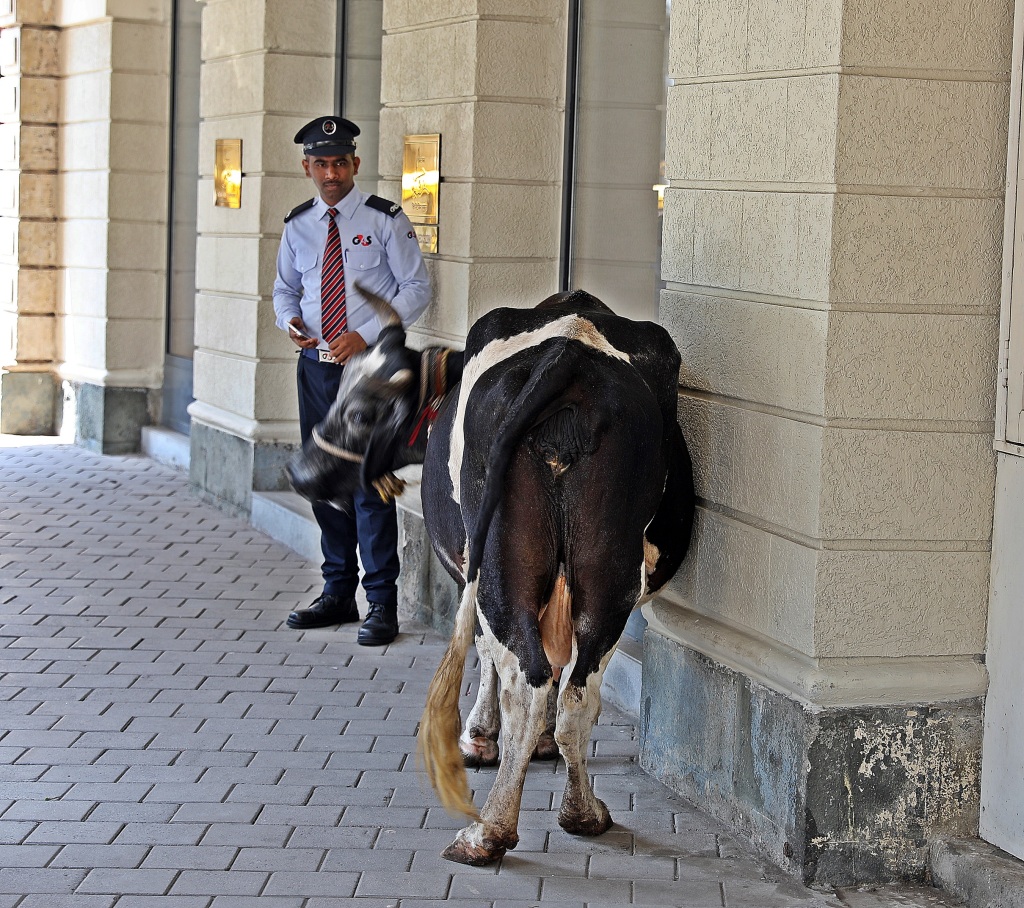
Bull outside Christian Louboutin shoe store, Mumbai 
Streets of Mumbai 
Cobbler fixing Maggie’s sandal, streets of Mumbai
Overlooking Mumbai Harbour are two other colonial relics. The Gateway of India is a large stone archway topped with four turrets. It was built in the early 20th century and was used for official government ceremonies. Behind it is a luxury heritage hotel. Taj Mahal Palace Hotel is a large stone building with rounded balconies and red domes on the rooftop.
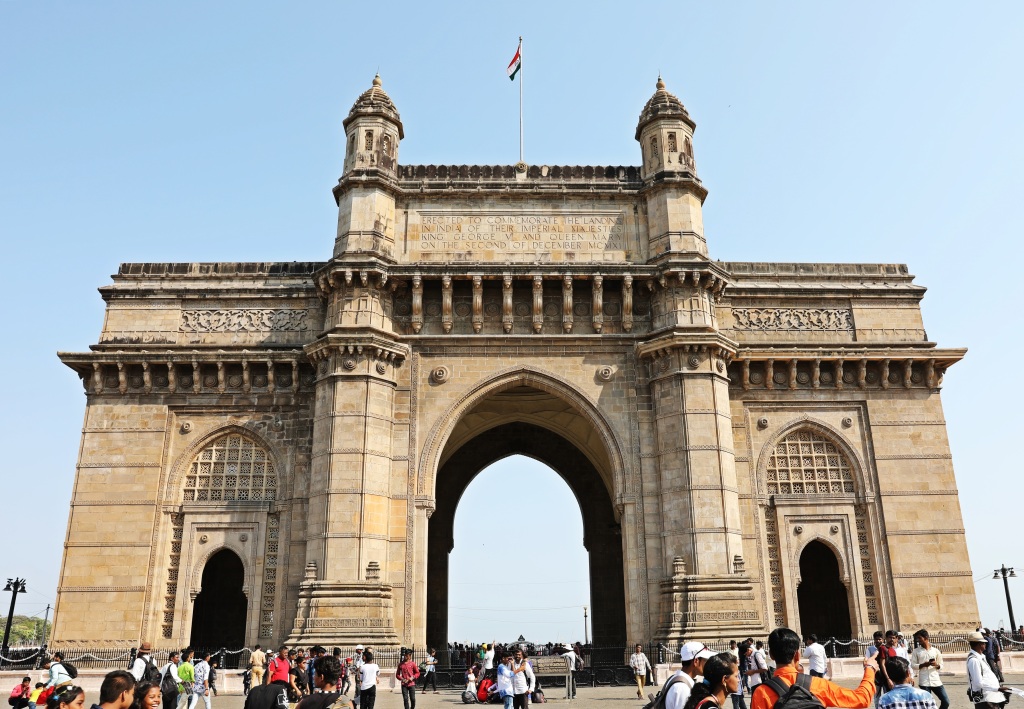
Gateway of India, Mumbai Harbour 
Taj Mahal Palace Hotel, Mumbai 
Gateway of India and Taj Mahal hotel, Mumbai Harbour
An hour’s ferry ride from Mumbai is an ancient Hindu site called Elephanta Caves. A series of rock-cut temples from the 5th – 8th centuries were carved into a cliff on Canon Hill. Seven temples were originally created, but only 3 have withstood the test of time. They are not as impressive as the caves in Ajanta or Ellora, but were made the same way by chiseling into solid rock. The main cave is dedicated to the Hindu God Shiva so there are many large carvings of Shiva, his wife Parvati and other characters from his myths. There are sculpted columns throughout the main room with carvings at their top. On top of Canon Hill are the remains from an old military lookout. Two old British canons sit on cement platforms overlooking Mumbai’s harbour.

Mumbai skyline 
Sailboat race, Mumbai Harbour 
Rock-cut temples, Elephanta Island 
Rock-cut temples, Elephanta Island 
Rock-cut temples, Elephanta Island 
Canon Hill, Elephanta Island
On the way to our next destination in the state of Rajasthan, we decided to make two quick stopovers. The 1,100 km drive would have taken 25 hours, so instead we took 3 buses with two overnight stays. Our first stop was in the important pilgrimage city of Nashik. The holy Godavari River is mentioned in ‘Ramayana’, Rama’s life story. The legend says that at this spot, Rama ordered that the nose of Ravana’s sister be chopped off. Ravana is a demon king from Sri Lanka. Being mentioned in the legend makes this a holy place for Hindus. Since we visited in the hot spring, there weren’t as many tourists at the bathing ghats, but we did see a few people washing away their sins in the holy river. Mostly though, the area was full of small tent kiosks selling religious relics, spices and old coins. The area has a lot of litter and is in a busy, unkempt part of the city.

Bathing, Godavari River Ghats, Nashik 
Laundry, Godavari River Ghats, Nashik 
Sadhu, Godavari River Ghats, Nashik 
Grinding turmeric on the sidewalk, Godavari River Ghats, Nashik 
Market, Godavari River Ghats, Nashik 
Market and temples, Godavari River Ghats, Nashik 
Market at the Godavari River Ghats, Nashik 
Temple, Godavari River Ghats, Nashik
At the complete opposite end of the spectrum, Nashik is also home to the largest wineries in India. We went for a tour and a tasting at YORK Wineries. The vineyard has a lovely setting on a lake surrounded by small hills. At home, spring is a time for regrowth. Leaves are budding from spring showers and everything is turning green. In India, spring is hot and dry. Everything is brown as trees lose their leaves and ground cover dies. Pruning is done in September and grapes are harvested in February and March. Because of the intense sun in this area, the vines are strung on horizontal trellises which protect the grapes from being scorched.
AT YORK Wineries, we tasted five wines and were pleasantly surprised at their high quality and taste. The wines are priced very high though. The prices are similar to what we’d pay in North America for imported wine.

Vineyards, YORK Winery, Nashik 
Vineyards with horizontal trellises, YORK Winery, Nashik 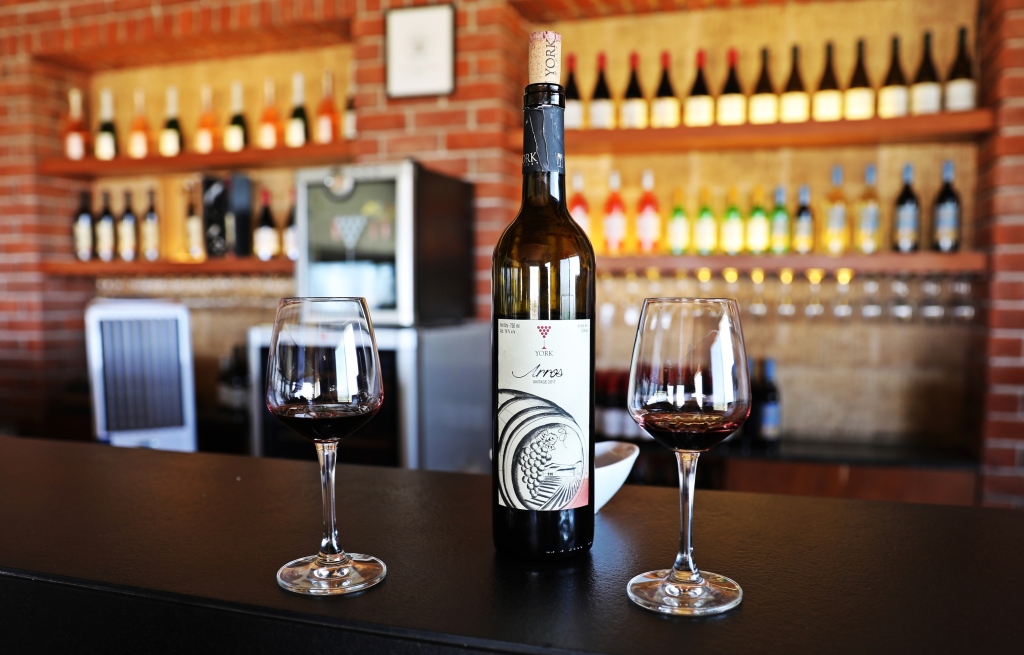
Wine tasting at YORK Winery, Nashik
We had another quick stop in the large city of Ahmedabad. This city was founded in the 1400s by Muslim Sultans. There is not much left from its historical past except three old mosques and a Jain Temple. Mosques don’t have statues or idols as is common in Hindu temples, but they do have elaborate carvings and designs. Jama Masjid was built in 1424. The mosque has a large centre courtyard with a pool for washing and a male-only prayer room at one end. There were lovely carvings on some of the walls. Ahmed Shah’s Mosque from 1414 used to be the royal family’s private mosque. It is surrounded by a lovely garden and small pool. Inside the prayer hall are 152 stone pillars. Sidi Saiyyed Mosque was built in the 1500s and has beautifully carved lattice work designs on its windows. Huthee Singh Jain Temple from the 1800s has an interesting design with multiple domes around the exterior and a central dome inside.
In between the mosque and temple visits we walked through a busy local market. You could buy anything from clothes and household goods to fruits and vegetables, but it was too hot and busy for us to shop.

Courtyard looking to the prayer room, Jama Masjid , Ahmedabad 
Jama Masjid , Ahmedabad 
Carving, Jama Masjid , Ahmedabad 
Ahmed Shah’s Mosque, Ahmedabad 
Pillars, Ahmed Shah’s Mosque, Ahmedabad 
Celing, Ahmed Shah’s Mosque, Ahmedabad 
Sidi Saiyyed Mosque, Ahmedabad 
Marble carved windows, Sidi Saiyyed Mosque , Ahmedabad 
Sidi Saiyyed Mosque , Ahmedabad 
Market, Ahmedabad 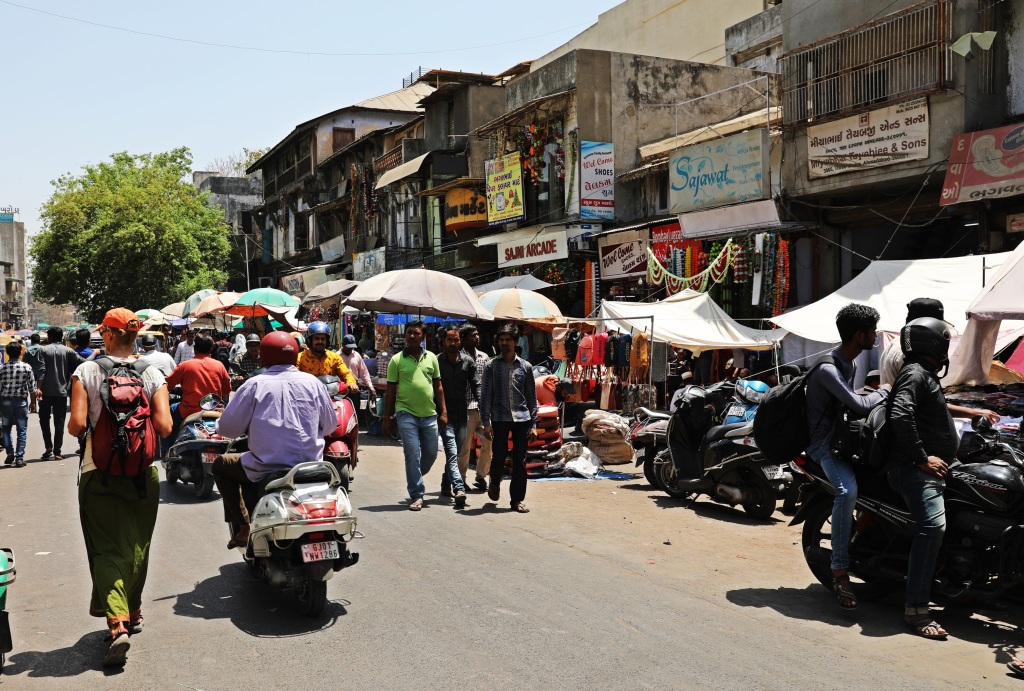
Market, Ahmedabad 
Huthee Singh Jain Temple, Ahmedabad 
Huthee Singh Jain Temple, Ahmedabad
The federal election was taking place while we were in Ahmenabad. We weren’t sure what to expect as India is the largest democracy in the world with 900 million eligible voters. The election takes place over several months with voting occurring in different states at different times. After casting a vote, the index finger is marked with a black dot so that you can’t cast a second vote. It turns out that it was a normal day like any other, with no protests or demonstrations.

Google image 
Coming up next: Udaipur – A Palace Fit For A Maharaja
For extra pics from this trip go to Gallery/Western India. For extra pictures from other blogs go to Gallery at monkeystale.ca
To read about more of our adventures go to Destinations.
If you like what you read, please comment or share it using the links below.
Morning from England! Of all the wonderful photographs on your Mumbai post, the one that caught my eye the most is that incredible railway station building. Coming from a railway city (Derby), and from a family historically employed by the railway, I’ve never lost my fascination and train journeys make foreign travel even more special. Your posts about India are so evocative and so interesting, keep them coming!
LikeLike
Thank you so much! Sorry for the delay in responding, ,we have been on an 8 day trek in Sikkim, in Northern India. The train station in Mumbai was as lovely in person as it is in the pictures. We love old architecture, but this one was a step above the others. Thanks for reading!
LikeLiked by 1 person
Mumbai is great, and your photos take us there with you. The area down by the Taj hotel is a lot less chaotic than other parts of the country for sure. I really liked visiting Chowpatty Beach at sunset. I had no idea there were wineries near Mumbai – that looks like nothing I saw!
LikeLiked by 1 person
When you think of all the equipment and machines we have, and yet nothing this beautiful is built today.
Sent from my iPad
>
LikeLiked by 1 person
Hi Cheryl, I agree the old buildings are so beautiful with so much character. We prefer seeing old architecture rather than most of the new buildings.
LikeLike
Looks like you planned this trip well: away from Sri Lanka before the terrorist attacks and on the west coast of India when the cyclone is hitting the east coast!
LikeLiked by 1 person
We felt very lucky to have already left Sri Lanka when the attacks happened, but we’ve been trekking in Sikkim for 8 days so I had no idea about the cyclone. Looks like I’ll have to read the news next!
LikeLiked by 1 person
Then not that far from the cyclone!
LikeLiked by 1 person
I didn’t know the reason for all of the rain on our trek!! At least it’s just rain and we’re not on the coast. We’re just missing all of these events! Yikes time to get home☺
LikeLiked by 1 person
Stunning – beautiful architecture 🔆
LikeLike
Thank you Cheryl, the architecture in Mumbai ireally is impressive.
LikeLiked by 1 person
Mumbai evokes so many images for me and you’ve really captured its multi-faceted features and interesting dichotomies. The cow in front of the fancy shoe store cracks me up.
LikeLiked by 2 people
Thanks Caroline. I think that was the best way to show how crazy Mumbai is. Wanting to be high class and elegant but not dealing with the other side like slums and street cows.
LikeLiked by 2 people
Ive read a lot about this enchanting city, would love to visit Mumbai.
LikeLiked by 2 people
Mumbai is a great city with a lot to see. Thanks for reading!
LikeLiked by 1 person
You educated me well.
LikeLiked by 2 people
Thanks!
LikeLike